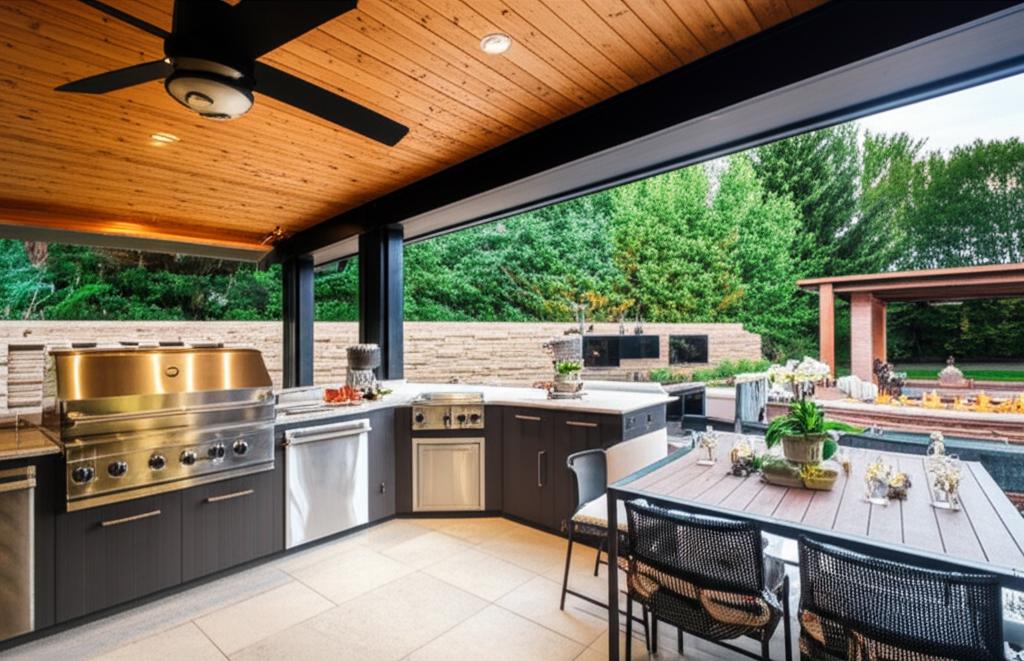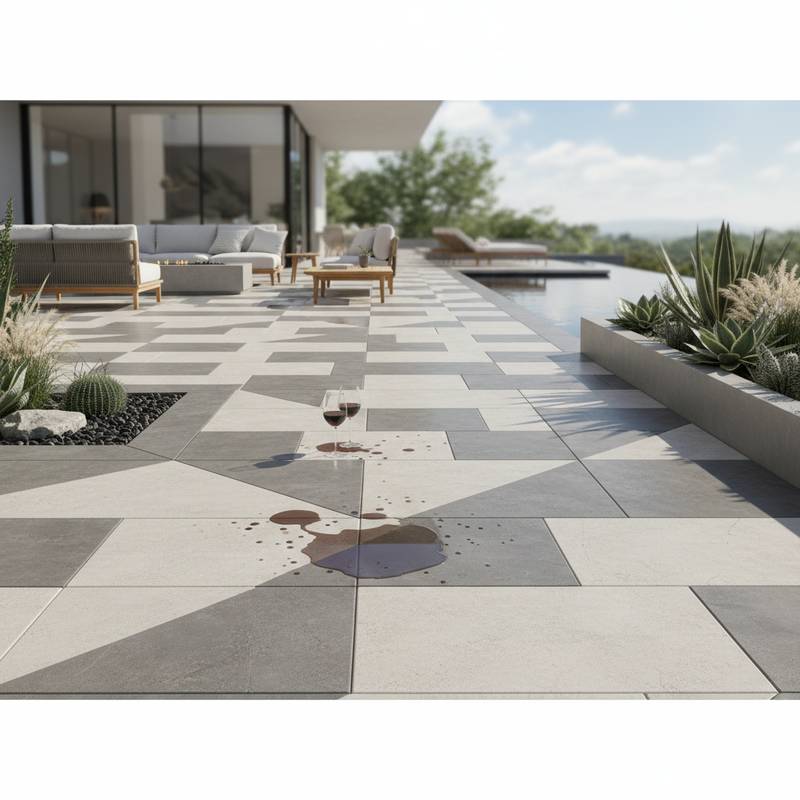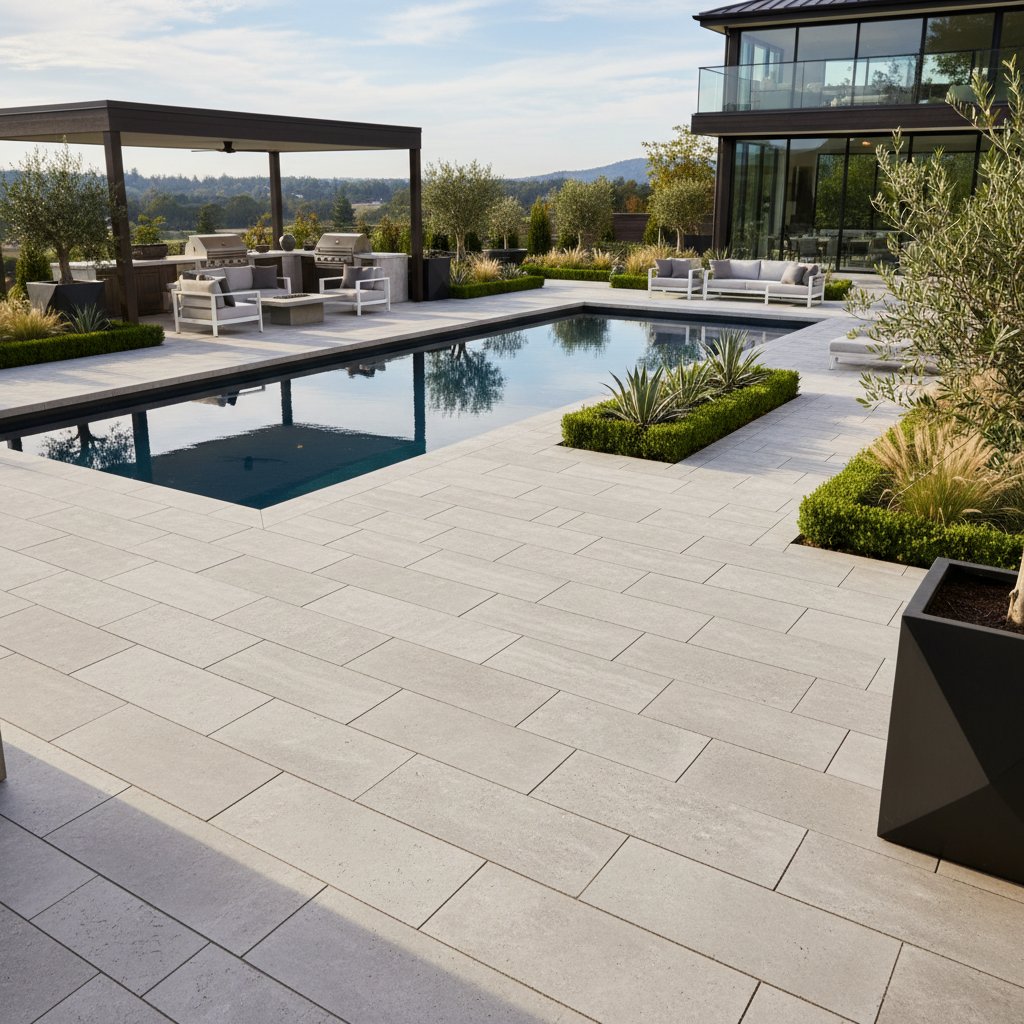Outdoor Kitchens: Design Trends Dominating 2025
An outdoor kitchen is no longer just a grill on the patio. Homeowners are building full cooking and dining spaces that feel like an extension of the home. The latest designs focus on comfort, style, and function. If you are planning to add one to your backyard, knowing what is trending will help you create a space that feels modern and practical.
Larger Cooking Stations
Outdoor kitchens are getting bigger. Instead of a single built-in grill, many homeowners are adding:
- Multiple cooking zones, such as a smoker, pizza oven, or side burners
- Prep counters with built-in sinks
- Storage cabinets to reduce trips back inside
A larger setup means you can cook a full meal outside, not just burgers and hot dogs. It does require more space, so measure carefully before committing. For smaller yards, a compact L-shaped design can still fit a grill, prep space, and storage without feeling crowded.
Natural Materials
Stone, brick, and wood finishes are replacing stainless steel-only designs. Natural materials create a softer look and blend with landscaping. Popular choices include:
- Stacked stone bases with granite or concrete countertops
- Wood-look porcelain tile that resists weather better than real wood
- Brick surrounds that match patios or garden walls
Natural finishes make the space feel warm and inviting. They do require sealing and upkeep, especially for stone or wood surfaces, but many homeowners find the look worth the effort.
Covered Cooking Areas
Permanent shade structures are becoming standard. Pergolas, pavilions, or extended rooflines protect both the cook and the kitchen from sun and rain. A cover also makes the space usable in more seasons.
Adding a roof means you can install lighting, ceiling fans, or even heaters. The cost can range widely, from a simple pergola kit at a few thousand dollars to a fully built roof structure that matches the home at a much higher investment.
Built-In Seating and Dining
Instead of wheeling out patio furniture, more kitchens now include built-in seating. Stone benches, bar counters with stools, or integrated dining nooks make the space feel permanent.
Built-in seating saves space and holds up better outdoors than lightweight furniture. The drawback is that it cannot be moved around, so you need to plan carefully before construction. A combination of fixed and flexible seating works well for most families.
Outdoor Refrigeration and Storage
Cold storage is now one of the most requested features. Small refrigerators, wine coolers, or ice makers keep drinks and ingredients close at hand. Weatherproof cabinets and drawers protect utensils, plates, and spices.
These upgrades reduce trips inside and make the kitchen feel complete. Expect to spend a few hundred to a few thousand dollars depending on the brand and size. Stainless steel is still the most common finish for appliances since it holds up well in outdoor conditions.
Smart Technology
Technology is moving outdoors. Grills with app controls, built-in thermometers, and smart lighting are increasingly common. Many homeowners also install speakers or outdoor televisions for entertainment.
Smart features add convenience, but they require weatherproof wiring and sometimes Wi-Fi coverage outside the house. If you plan to include them, make sure your setup is designed to handle both power and connectivity.
Fire Features
Fire pits and fireplaces are blending into outdoor kitchens. They provide warmth, extend the use of the space into cooler months, and create a focal point for gatherings. Some homeowners place a fireplace at the edge of the dining area, while others add a small gas fire pit near seating.
A fire feature increases cost and requires safe installation, but it also raises the comfort level of the entire setup.
Sustainable Choices
Eco-friendly options are gaining interest. Recycled composite materials, energy-efficient appliances, and LED lighting reduce environmental impact and long-term costs. Permeable pavers for flooring help with drainage and reduce runoff.
While green options may cost more upfront, they often save money in maintenance and energy use over time. They also add to the long-lasting value of the outdoor kitchen.
What to Consider Before You Build
Before committing to a design, think through these factors:
- Budget: A simple setup with a grill and counter can cost under ten thousand dollars, while a fully equipped kitchen with a roof and appliances can reach five times that.
- Space: Make sure there is enough room for cooking, dining, and safe walkways.
- Utilities: Gas, water, and electricity may need to be run to the site, which adds cost and complexity.
- Maintenance: Natural materials and outdoor appliances need care to stay in good shape.
- Use: Think about how often you will cook outside and how many people you plan to host.
Final Advice
Outdoor kitchens are moving toward larger, more comfortable, and more connected designs. Before building, decide on the features you will truly use, then match materials and appliances to your budget and space. A thoughtful plan will give you a kitchen that looks stylish, works well, and lasts for years.



